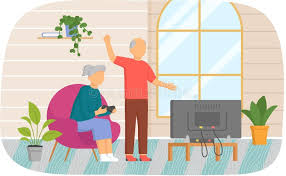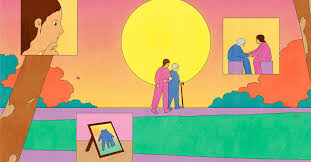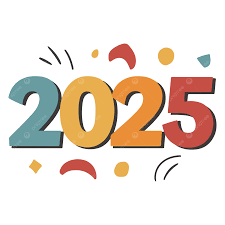The growing ecosystem of devices and products serving peoples’ health and well-being shows us that innovators already see the opportunity to serve the fast-growing market for self-care among people 50 years of age and up.
For nearly twenty years, one thing has felt inevitable: when boomers reach “old age,” senior living demand will surge. And yet ..
ChatGPT Health builds on consumer use of today's ChatGPT so responses are informed by your health information and context.
The prize honors .lumen’s Glasses for the Blind, an AI-based device that applies autonomous driving technology adapted for pedestrians. Using computer vision and local processing, the headset understands the three-dimensional environment in real time without relying on the internet or pre-defined maps and guides the user through subtle vibrations indicating a safe direction to follow.
The United States faces a fundamental mismatch between surging demand and insufficient capacity.

 An
An The gap between some older adults and the devices/software they need does not narrow. As AARP responders noted in their survey,
The gap between some older adults and the devices/software they need does not narrow. As AARP responders noted in their survey,  Five years ago -- this site looked at the state of dementia-related technologies. The more things (the tech offerings) change, the more their purpose and function remain the same. Today there are websites that list gadgetry for managing and living with dementia. There are
Five years ago -- this site looked at the state of dementia-related technologies. The more things (the tech offerings) change, the more their purpose and function remain the same. Today there are websites that list gadgetry for managing and living with dementia. There are  Home care is a labor-intensive business
Home care is a labor-intensive business Tech adoption for older adults is growing... The surveyed ubiquity of technology has led to a belief that it is everywhere it needs to be, with media assumptions about the benefit of smartphones and online tools, ownership of devices, or access to broadband speeds. The majority of older adults now own
Tech adoption for older adults is growing... The surveyed ubiquity of technology has led to a belief that it is everywhere it needs to be, with media assumptions about the benefit of smartphones and online tools, ownership of devices, or access to broadband speeds. The majority of older adults now own  An increasingly tech-oriented society makes older adult tech adoption critical. While many information-based offerings are now AI-enabled, many other capabilities like wearables and sensors, can offer safety features or be enablers for those with physical challenges -- including mobility and hearing. In addition, for those who are most comfortable interacting with a smart TV, there are new solutions that make the TV a more effective device, improve walking, or enable greater safety when out and about. Here are five first-time entrants in this year’s report that fit that category – all content directly from the companies:
An increasingly tech-oriented society makes older adult tech adoption critical. While many information-based offerings are now AI-enabled, many other capabilities like wearables and sensors, can offer safety features or be enablers for those with physical challenges -- including mobility and hearing. In addition, for those who are most comfortable interacting with a smart TV, there are new solutions that make the TV a more effective device, improve walking, or enable greater safety when out and about. Here are five first-time entrants in this year’s report that fit that category – all content directly from the companies:
 CES 2025 is wrapping up soon -- here's another look. As always, it is an opportunity to contemplate the state of tech innovation, wading figuratively past announcements of cars and TVs. Browsing through the many articles and news websites, looking for what could benefit older adults in the context of making lives easier, more sociable, more functional and empowered, these five are attention-worthy. All material is from their announcements and/or websites. As with previous CES 2025 blog posts, it is important to note that offerings may be concepts, not yet products, and that some may not enter the commercial or US market at all. The important aspect is that the underlying technologies are a step (or more) forward in possibilities to help older adults. Here's hoping that next year has even more to consider.
CES 2025 is wrapping up soon -- here's another look. As always, it is an opportunity to contemplate the state of tech innovation, wading figuratively past announcements of cars and TVs. Browsing through the many articles and news websites, looking for what could benefit older adults in the context of making lives easier, more sociable, more functional and empowered, these five are attention-worthy. All material is from their announcements and/or websites. As with previous CES 2025 blog posts, it is important to note that offerings may be concepts, not yet products, and that some may not enter the commercial or US market at all. The important aspect is that the underlying technologies are a step (or more) forward in possibilities to help older adults. Here's hoping that next year has even more to consider.